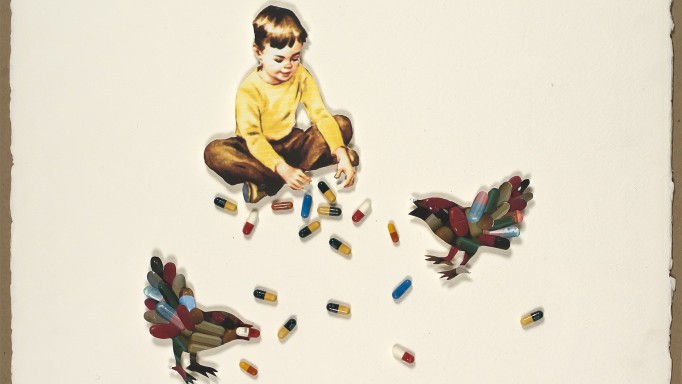Weighing a delicate six ounces each—less than 0.5 percent of our total body weight—the kidneys play a number of vital roles. For those living with HIV, this includes breaking down some of the HIV medications that are needed to keep viral load low and CD4 counts high.
Unfortunately, the kidneys are not immune to diseases that can impair their ability to function. About 20 million American adults have kidney disease, and 20 million more are at risk. Studies also show that nearly one-third of all people with HIV have abnormal amounts of protein in their urine—a sign of potential kidney trouble.
As people with HIV live longer lives thanks to HIV treatment, experts believe that kidney disease will remain a common and potentially serious health issue. Fortunately, we’ve already learned about the best ways to screen, prevent and treat kidney disease.
What do the kidneys do?
Most people have two of these bean-shaped organs—some are born with only one. They’re about the size of a fist and are located halfway up the back on both sides of the spine. Often, the left kidney is found up to an inch higher than the right one.
The kidneys contain millions of nephrons—tiny units of tissue made up of blood vessels (glomeruli) and tubes that collect fluid (tubules). Over a 24-hour period, they filter the body’s full volume of blood 30 to 40 times. They also extract two quarts of waste products and extra water into the urine.
The kidneys also maintain various substances in the blood and, if necessary, release hormones to help replenish what’s missing. They produce erythropoietin to stimulate new red blood cells, renin to help control blood pressure, and the active form of vitamin D (calcitriol) to maintain proper levels of calcium.
What is kidney disease?
When experts talk about kidney health, they usually call it “renal function.” According to the National Institute of Diabetes and Digestive and Kidney Diseases, people with two healthy kidneys have 100 percent renal function, which is actually more than you need. This is why people can survive just fine with one kidney.
If renal function falls below 25 percent, serious health problems can occur. And if it drops below 10–15 percent, a person will need dialysis or a kidney transplant.
There are generally three different types of kidney disease:
Chronic kidney disease (CKD): Most kidney problems, including those seen in people with HIV, happen slowly. CKD may be “silent” for many years—not causing noticeable symptoms but may still be damaging the kidneys. CKD, left unchecked, can increase the risk of a heart attack or stroke. Routine lab work can help detect CKD in its early stages, before it causes permanent kidney failure.
Acute renal failure (ARF): This is when serious damage to the kidneys happens very quickly. An accident might cause this, as can some medications or poisons. In some cases, ARF can lead to permanent kidney damage.
End-stage renal disease (ESRD): This is total (or nearly total) kidney failure that cannot be reversed. Patients with ESRD require dialysis or a kidney transplant to stay alive. Of note, the risk of ESRD among African Americans with HIV is almost 12 times higher than in their HIV-negative counterparts, and that the risk may be increasing.
What causes kidney disease in people living with HIV?
First, it’s important to recognize that some people are naturally at a higher risk for kidney disease. These include people with a family history of it (their mother, father or other immediate relative has certain types of kidney problems). African Americans, Latinx, Pacific Islanders and Native Americans also face a higher risk.
Some risk factors, however, can be modified or reduced, including the following:
Increased blood pressure: Hypertension is a leading cause of kidney disease. It can also be a sign that kidney health is already impaired. Hypertension can damage the small blood vessels in the kidneys and, in turn, prevent them from properly filtering waste.
It’s not clear if people with HIV are more likely to suffer from high blood pressure than their HIV-negative counterparts. However, as people with HIV live longer, health problems like hypertension become more common.
It’s worth noting that African Americans make up 44 percent of new cases of HIV infection in the U.S. And among those 20 and older, regardless of HIV status, about 43 percent of men and 47 percent of women have high blood pressure.
Among Latinx, who make up 26 percent of new HIV infections, one study shows high blood pressure in 29 percent of the men and 31 percent of the women of Mexican descent.
Diabetes: Diabetes is a disease that prevents the body from breaking down glucose (sugar) correctly. This causes glucose levels to remain high that ultimately damage nephrons. This can lead to a condition called diabetic nephropathy, a common form of kidney disease.
People living with HIV, especially those on protease inhibitors, are at higher risk of glucose-related problems. In a 2004 MACS study, HIV-positive men on HIV meds were three times more likely to be diagnosed with diabetes over a four-year period, compared with HIV-negative men.
It’s also worth noting that African Americans and Latinx are nearly two times more likely to have diabetes than Whites of similar age, which increases their chance of developing kidney complications.
HIV-associated nephropathy (HIVAN): A handful of diseases can attack the tiny blood vessels in the kidneys, including HIVAN. It’s caused by HIV infection of the kidneys, which can damage the nephrons. Left untreated, it can quickly lead to ESRD. HIV treatment can effectively prevent and treat HIVAN.
While it’s not clear how many HIV-positive people suffer from HIVAN, it usually occurs among African American men. Low CD4 cell counts and a family history of kidney disease are also risk factors.
Medications: A small number of medications list acute renal failure (ARF) as a possible side effect. Experts advise that people with HIV with a history of ARF or chronic kidney disease use these drugs with caution and have a health provider adjust the doses and monitor closely.
- Medications for opportunistic infections (OIs). Some meds used to treat fungal infections, Pneumocystis pneumonia (PCP) and cytomegalovirus (CMV) are known to rapidly shut down the kidneys in some patients.
- HIV medications. The HIV meds Crixivan (indinavir) and less often Reyataz (atazanavir) can cause kidney stones. Some NRTI HIV meds, notably Zerit (stavudine) and Videx/Videx EC (didanosine), can cause a buildup of lactic acid in the blood that can lead to kidney failure and other serious problems.
- Another HIV medication that can cause kidney problems is tenofovir disoproxil fumarate (TDF), which is found in Viread, Atripla, Cimduo, Complera, Delstrigo, Stribild, Symfi, and Truvada. TDF can accumulate in the kidney tubules, effectively blocking their function. Fortunately, rates of kidney disease have been quite low, about 0.5–1.5 percent of those using TDF.
- A newer version of tenofovir (tenofovir alafenamide, TAF) is now available that has much less impact on the kidneys. This drug is found in Biktarvy, Descovy, Odefsey and Symtuza.
- Pain medications. NSAIDS, such as over-the-counter Advil (ibuprofen) and Aleve (naproxen), are used to relieve pain. In some people they can cause an allergic reaction known as interstitial nephritis, which can decrease blood flow inside the kidneys.
- Herbal supplements. Some herbal products—notably those with aristolochic acid (Dutchman’s pipe, Aristolochia)—can cause kidney damage and may be responsible for some cancers in the urinary tract. In fact, the FDA recommends that people do not take products with aristolochic acid or “Aristolochia,” “Bragantia” or “Asarum” listed as ingredients on the label. Click here for a partial list of products to avoid.
What are the symptoms of kidney disease and how is it diagnosed?
Symptoms of kidney disease include:
- The need to urinate more or less
- Foamy urine, caused by too much protein in the blood
- Pink or cola-colored urine, caused by blood in the urine
- Fatigue
- Swollen feet or hands
- Trouble concentrating
- Darkened skin
- Muscle cramps
It’s important to remember that some people, especially those in the early stages of kidney disease, do not have any noticeable symptoms. In turn, it is important to have routine lab tests done to look for and monitor certain abnormalities. These tests include:
- Urine testing (urinalysis): When kidneys stop working correctly, they start removing healthy protein from the blood and excrete it as waste. A simple blood test can check for this and should be part of your routine care.
- Glomerular filtration rate (GFR): Creatinine, found in the blood, is a waste product from the normal breakdown of muscle cells. High levels of it don’t say much, as they can be affected by diet, certain supplements and working out. In turn, experts recommend using the GFR calculation that includes the creatinine measurement, along with other factors such as weight, age and values assigned for sex and race. The National Kidney Foundation and other groups consider GFR to be the best measurement of kidney function.
- Blood urea nitrogen (BUN): After cells use protein, the waste is converted into urea, a compound that contains nitrogen. Damaged kidneys have a hard time removing urea from the blood. A simple test can check the level of urea in blood.
- Other testsare also done routinely, such as blood pressure checks and tests for glucose (blood sugars). Knowing these results will help you and your doctor make changes in lifestyle or start medications to treat the conditions, thereby reducing the risk of kidney damage.
Do I need to be checked for kidney problems?
The Infectious Disease Society of America (IDSA) recommends that all people living with HIV be screened for kidney disease at diagnosis. Those at high risk for renal impairment—those with high blood pressure, diabetes, CD4 counts below 200, viral loads above 4,000 and hepatitis C co-infection—should be checked every year, even if they appear to have normal kidney function. Checkups are recommended twice a year for high-risk patients who are taking medications that can damage the kidneys, such as Crixivan and those with TDF (noted above).
How is kidney disease treated?
The IDSA recommends that people with HIV who have signs or symptoms of kidney problems be referred to a kidney specialist (nephrologist) for care. Treatment options vary a great deal, depending on the cause (or causes) and any other health issues. Some treatments include:
- Reduce blood pressure: Medications such as angiotensin-converting enzyme (ACE) inhibitors or angiotensin receptor blockers (ARBs) are often prescribed to control blood pressure. Other medications, along with diet and lifestyle changes (exercise, etc.), may also be necessary.
- Manage diabetes: Many medications are used to control diabetes. Changes in diet can also help. Work closely with your health provider to keep your glucose level under control.
- Modify diet: Some parts of a normal diet may speed up kidney damage. It may be necessary to limit the amounts of protein, cholesterol, sodium and potassium in your diet. Working with a dietitian or nutritionist can be helpful.
- Stop smoking: Not only does smoking increase the risk of kidney disease, it contributes to deaths from strokes and heart attacks in people with kidney disease.
- Treat HIV: HIV treatment usually improves kidney function, and it can protect against HIV-related cellular inflammation in the kidneys. This is one of the reasons that the federal HIV treatment guidelines recommends starting HIV treatment for everyone.
- Treat HIVAN: IDSA stresses that people with HIV-associated nephropathy should be treated with a potent HIV regimen, regardless of CD4 count or viral load.
- Check medications and their dosages: People with a history of kidney disease may need to avoid certain HIV meds and other medications that can be hard on the kidneys. Changing the dose of some of these drugs may be enough to reduce the risk of kidney damage.
Last Reviewed: January 24, 2019














